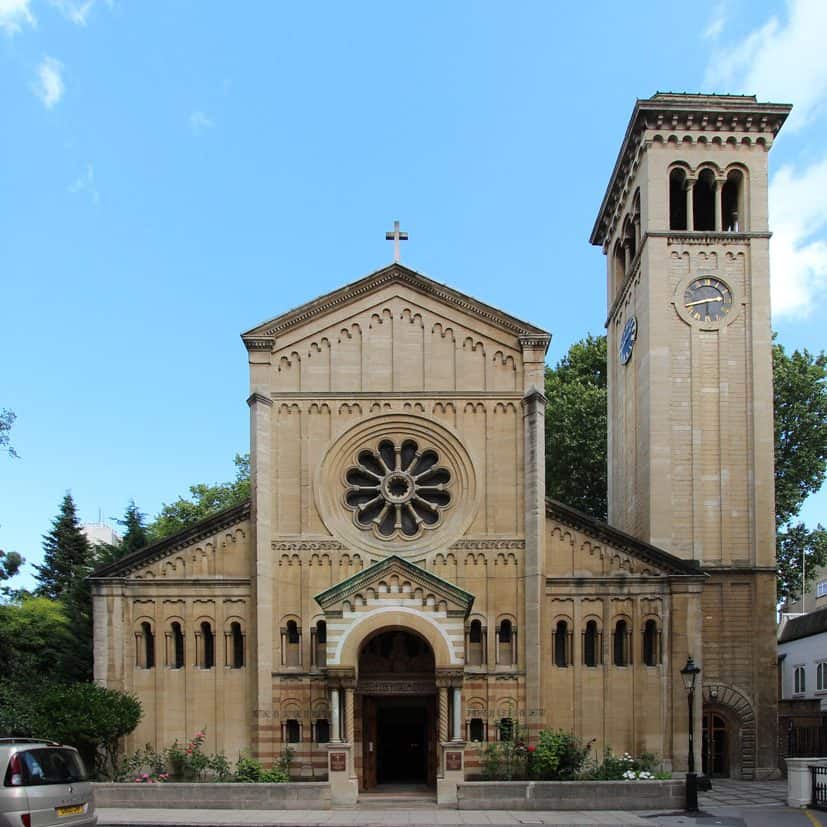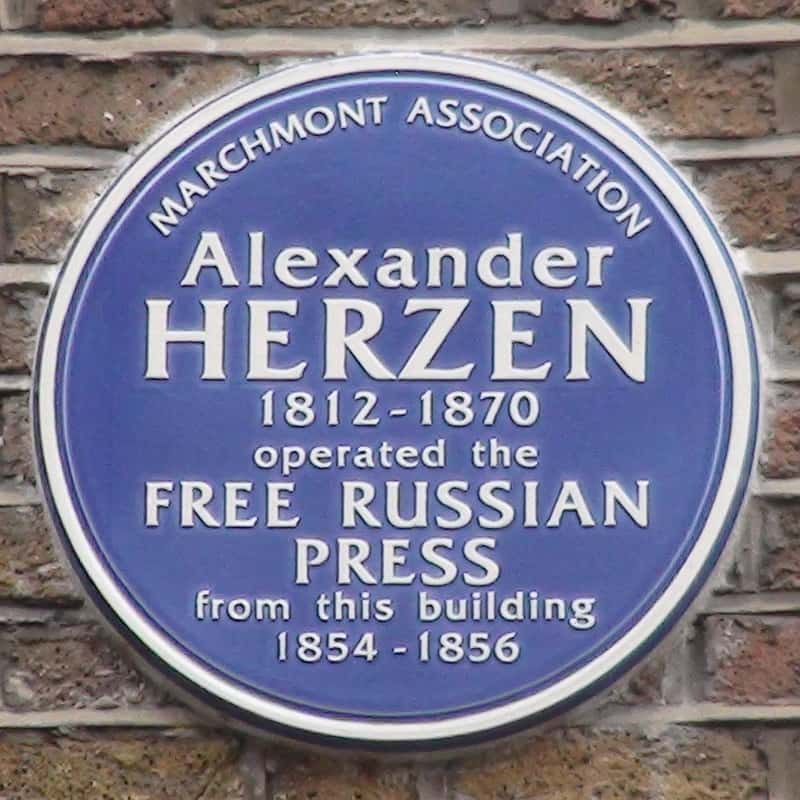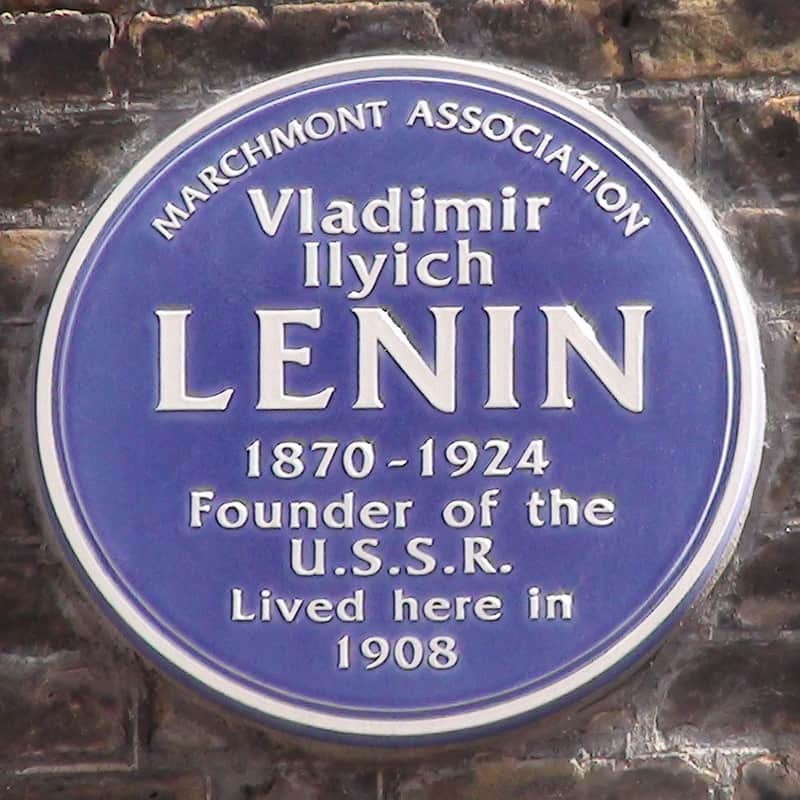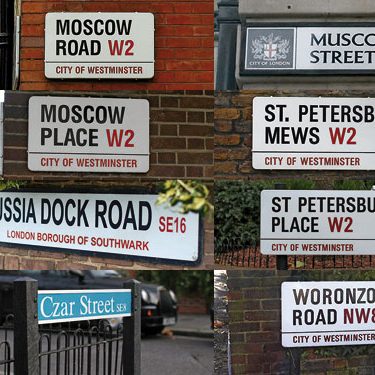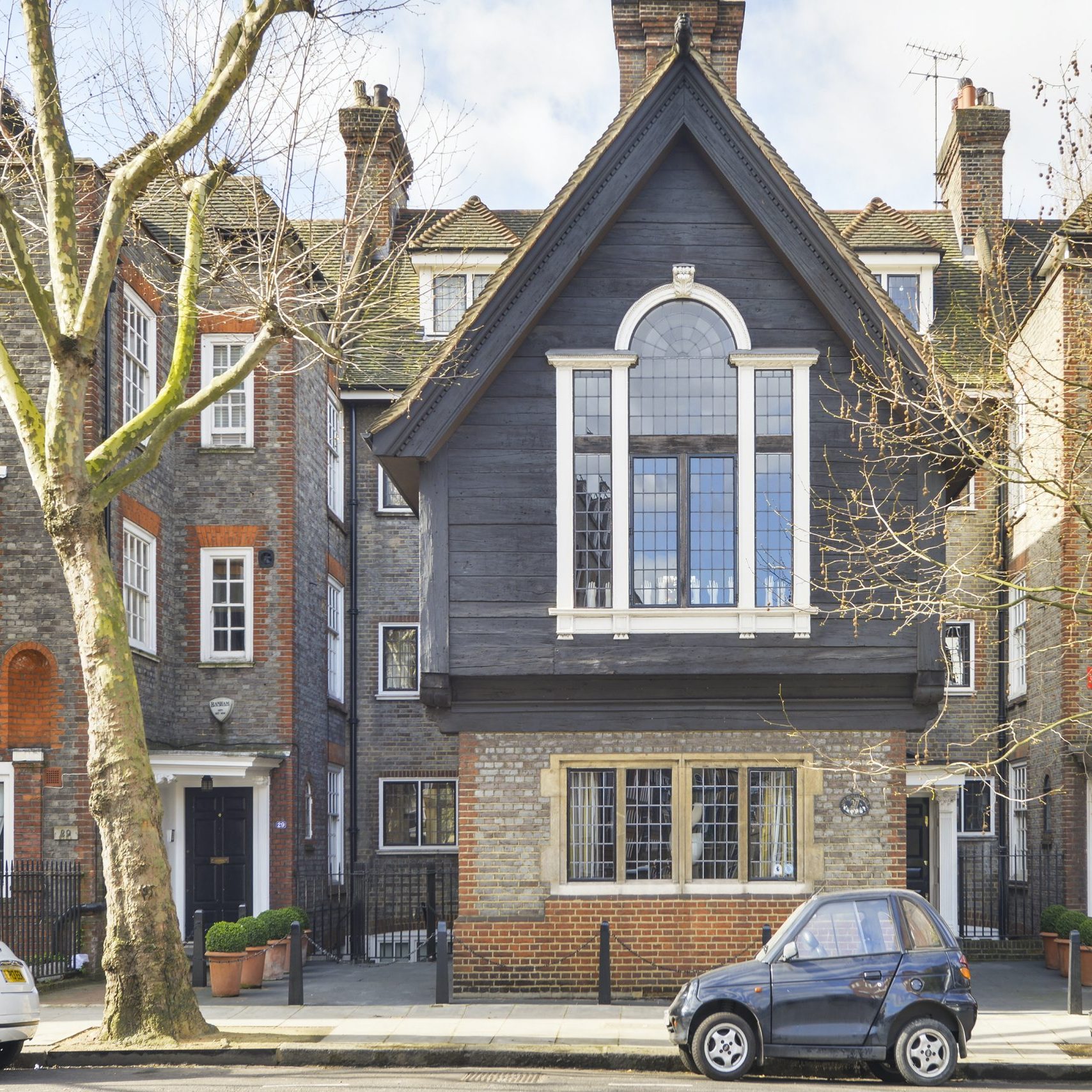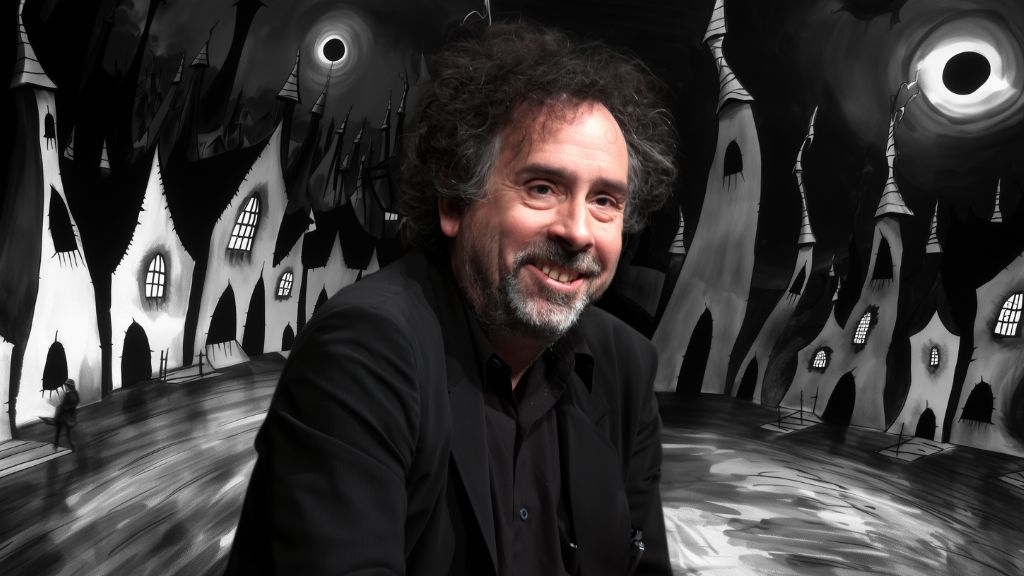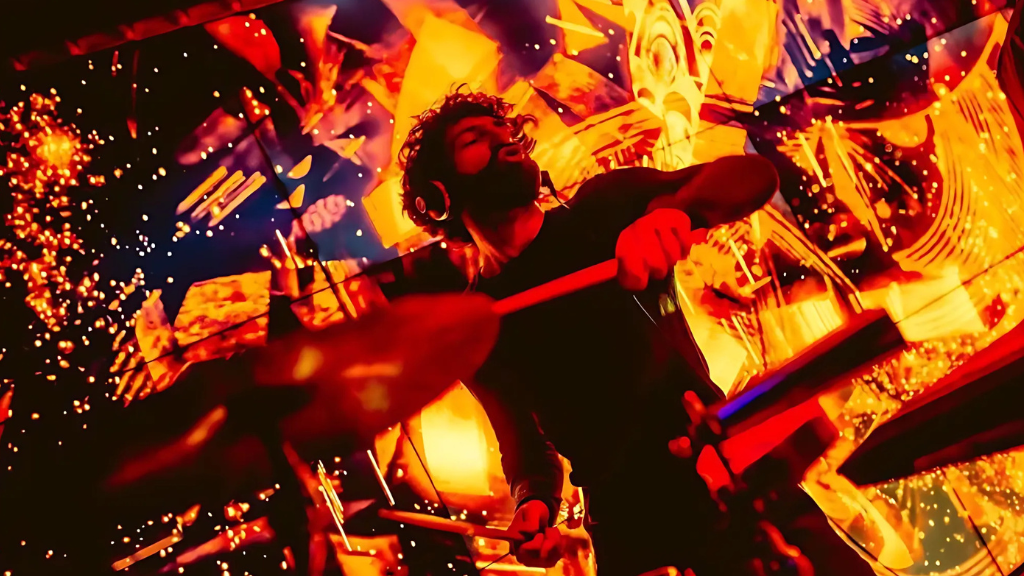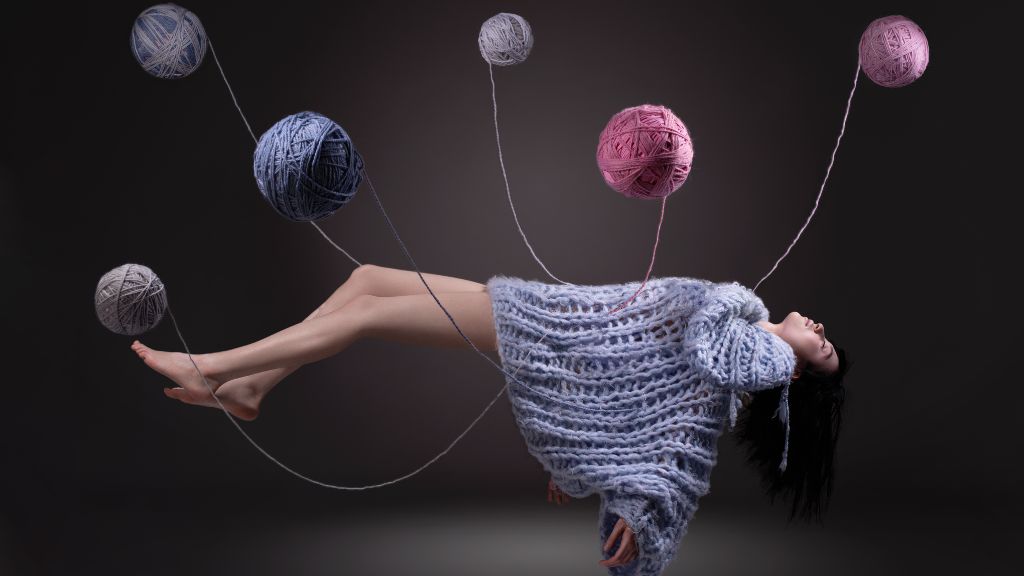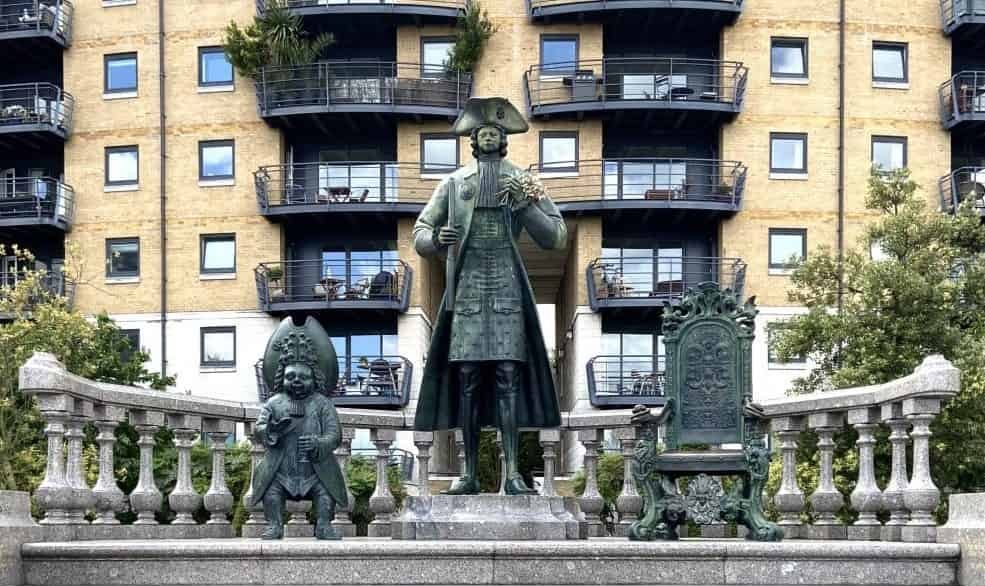
Londongrad: Russian presence in the British capital
In the past couple of decades London has often been referred to as “Moscow-on-Thames” and “Londongrad”. It’s believed that London has become a haven for oligarchs and politicians, a popular dwelling place for Russian businessmen and their families, and also a desirable destination for those wishing to go to a private school or a prestigious university. These beliefs don’t always reflect the reality and are often accompanied by various stereotypes. Nevertheless, there definitely is a Russian “mark” on London, and its history goes way back. Afisha.London magazine picked a few remarkable episodes from London’s “Russian history” and prepared a little story about each of them.
Waves of emigration
Russian emigrants never really strived to move to London as they normally preferred continental Europe, USA and Israel. But it so happened that it was London where some of the most renowned of them settled, among whom were those unfavored by the government and those known as dangerous rebels. First Alexander Herzen, then Vladimir Lenin, and, more recently, Boris Berezovsky, Akhmed Zakayev and Evgeny Chichvarkin.
However, a Russian neighbourhood never emerged in London. The two most likely historical reasons for that are low numbers of emigrants and their disconnection from each other. Emigrants of the previous waves remember that the rich used to settle in Knightsbridge and Kensington, while the poor ones favoured Fulham. The reason why they never really formed a community could be political views: for example, many didn’t like going to the Pushkin house, which was established in 1954, because they saw it as too leftist.
Sometimes there were religion-based disagreements. Despite the official unification of the Russian Orthodox Church of the Moscow Patriarchate and the Russian Orthodox Church Outside Russia in 2007, many parishioners, especially of the older generations, mistrust each other and still can’t regulate all of the church property disagreements. Maybe that is precisely the reason why in addition to the Orthodox church in Knightsbridge, which is located in a former Anglican church building, in the early 2000s ROCOR sponsored the construction of another church in Chiswick. The new church is very noticeable from the motorway that leads from Heathrow Airport to the city centre.
Emigrants of the last wave don’t really have a need for a Russian diaspora, since those who moved to London of their own free will integrate themselves into British society much easier. Still, lots of Russian-speaking societies for young professionals, students, mothers and so on keep emerging in London. Interesting examples are a London edition of the “What? Where? When?” club (a popular Russian TV programme) and a poetry festival “Pushkin in Britain”.
From Tsars to revolutionists
The first Russian Tsar to visit London was young Peter the Great, who arrived in England from Holland in the end of XVII century in order to study shipbuilding and learn more about the intricacies of fleet management. He lived incognito with a small retinue at different addresses, one of which was the now non-existent Norfolk street off the banks of the Thames near Charing Cross train station. Also, there’s a memorial desk on 14 Buckingham Street, which says that there the future emperor Peter the Great was visited by William III, who was appalled by the stench of the place. To top it all off, by the end of his visit Peter was attacked by a monkey, which he ended up taking with him back to Russia.
Later, Peter and his retinue moved to Deptford to live near shipyards where the English government rented a private house for them, which the visitors left in a very sorry state. After their departure a commission led by a famous architect of the time Christopher Wren calculated the losses that amounted to £320 (today it equals £25 000): the landlord was reimbursed by the state treasury. By the way, in 1998 a peculiar monument by Mihail Chemiakin was opened on the banks of the Thames to commemorate the 300 year anniversary of Peter the Great’s visit to Deptford.
Peter the Great’s places
* Deptford Friends’ Meeting House (151 Deptford High Street)
* 41 Czar Street
* Sayes Court Park (30 Grove Street)
* Master Shipwright’s Palace (Watergate Street)
* Peter the Great statue (33 Glaisher Street)
During the XIX and XX centuries London was visited by almost all of the Russian monarchs, including Nicholas II, famous for his likeness to George V, who was his cousin. However, during his last visit to the UK in 1909 the emperor didn’t go to London and remained on the Isle of Wight amid concerns for his safety and fear of attempts on his life.
Approximately around the same time, a man with a surname Richter lived in the capital. It was his fate to overthrow the last Russian Tsar in a few years and to become head of a new communist state. Vladimir Ulyanov (Lenin) lived in London for exactly a year and later visited the city many times. We already wrote about how to find a blue memorial plaque on a house where the founder of the USSR lived in 1905.
But very few know that in 1942, at the time when the USSR and Britain joined forces, a monument to Lenin by an emigre architect Berthold Lubetkin was erected in Islington. It was later dismantled in the beginning of the Cold War and the bust was handed to the Islington Museum, where it remains to this day. Moreover, a fresco of Lenin and other notable figures of the world’s communist movement rising above the defeated British Parliament can still be found at the Marx Memorial Library. There also is a museum dedicated to a newspaper called “Iskra” (The Spark), which was in circulation in London from 1902 to 1903. Another London-based publication, though mainly famous in Russia, was a newspaper called “Kolokol” (The Bell), which a century before the emergence of Lenin’s “Iskra” was published by a Russian writer and philosopher Alexander Herzen, who printed it at the Free Russian Press – a printing house he founded in London. Herzen lived in London for 12 years: from 1852 to 1864. During this time he managed to live at 19 different addresses. At some of them there are memorial plaques.
Diplomats and pelicans
At the moment, the Russian Embassy occupies three buildings on the prestigious Kensington Palace Gardens road. The most notable is the residence of the ambassador at 13 Kensington Palace Gardens. It was built in 1852 in neogothic style for the fifth count Harrington and used to be called Harrington House. The building was handed to the USSR Embassy in 1930 with the consent of the previous owner – an entrepreneur and the head of the Jewish community of Great Britain Sir Lewis Richardson. Richardson spent most of his life in South Africa where he founded one of the biggest ostrich feathers export companies. This is why the estate is adorned with images of ostriches on both inside and outside. The building houses an extensive collection of Russian art, which includes paintings and porcelain vases. The embassy’s winter garden is a witness of Winston Churchill’s visit, who came to congratulate the Soviet ambassador on the victory in World War II.
Another interesting fact: while the Chinese are world-famous for their “panda diplomacy”, Russia once resorted to “pelican diplomacy” – its legacy can be found in St James’ Park. A few pelicans still live in the park’s lake: they’re the relatives of the pelicans that arrived in London in the end of XVII century as a gift to Charles I from Alexis of Russia.
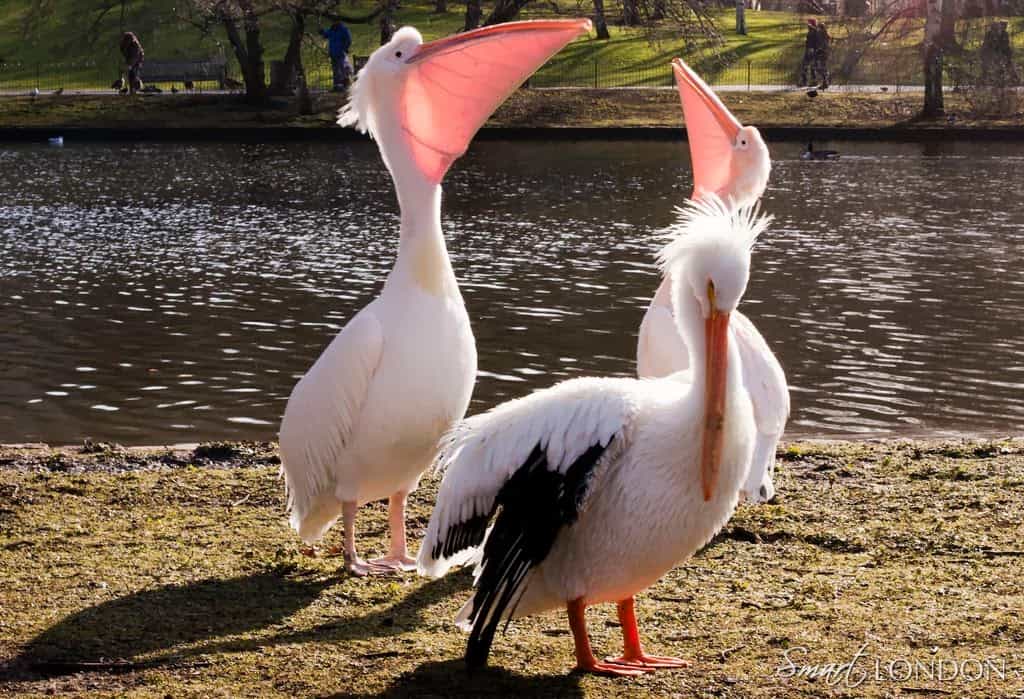
The Russian map of London
Both in the city centre and in the outskirts of London one can find Russian geographical names. In Bayswater, not far from the Russian Embassy, there’re two interesting little streets – Moscow Road and St Petersburgh Place. They have nothing to do with the embassy and were named during district development in 1810s. Back then those lands belonged to painter and publisher Edward Orme, after whom one of the neighbourhood’s squares was named. One theory claims that the streets were named in recognition of business relations that Orme had with Russia, while another attributes the naming to Alexander I’s visit to London after the victory over Napoleon. One of the buildings on Moscow Road, that was built in the end of XIX century and is called Red Lodge, was bought by a Russian businessman Omar Murtuzaliev a few years ago; however, in the beginning of 2013 the building endured a fire, which is why it was completely reconstructed.
A couple of London’s toponyms are connected with Muscovy: in the City of London there’s a street called Russia Row, where there used to be the headquarters of the Russian Company also known as The Muscovy Company. This company was at the head of Russian-British trade from Ivan the Terrible’s rule until 1917. In the East of London there used to be a Russia Dock, where softwood from Russia and Northern-European countries arrived. Now there’s a park called Russia Dock Woodland, and the surrounding streets carry such names as Russia Dock Street, Onega Gate and Odessa Street. Around Earl’s Court, on Cromwell Road, stands a mansion called Moscow Mansions, while in Chelsea, in The Vale, there is a very beautiful fairy tale house built in the old Russian style and entitled Russian House. This house is worth £16m and had appeared on London’s real estate market twice in the past couple of years. If real estate agents are to be believed, its interiors are inspired by Russian dachas, and, apart from 5 bedrooms and a living room, the house features a garden and a mini-cinema.
Artists, restaurateurs and Gagarin
Russian artist Boris Anrep left a huge mark on the British capital. His mosaics can be found in the Bank of England, National Gallery and in a church near Leicester Square, where his mosaics match the drawings of Jean Cocteau. In many of Anrep’s mosaics, including the one on the floor of the National Gallery, there is an image of Anna Akhmatova, with whom they were once in love. Akhmatova dedicated more than 30 poems to the artist.
During the post-war era marked by four decades of Cold War, Yuriy Gagarin visited London in 1961. The first astronaut was greeted by giant crowds on the streets and was invited to lunch by queen Elizabeth II. A monument to Gagarin appeared in London in 2011: it stood in front of the British Council for almost two years until it was moved to Greenwich, where it is now located near the planetarium in close proximity to the Greenwich Observatory and the prime meridian.
The current era is marked by the arrival in London of Russian brands and restaurants. The veterans of the business, – Russian grocery store Kalinka on Queensway and a Russian restaurant Borscht and Tears, were joined by such restaurants as Novikov Restaurant and Bar, Burger and Lobster, Zellman Meats, Mari Vanna and Zima in 2010s. Another addition was a winery Hedonism Wines accompanied by a Michelin star restaurant Hide from the same restaurateur, Evgeny Chichvarkin.
Memories of our compatriots in London
Many famous Russians spent their last days in London. The head of Russian Provisional Government Alexander Kerensky is buried at Putney Vale cemetery, while the ashes of the legendary Russian ballerina Anna Pavlova can be found in a columbarium at Golders Green Crematorium – the urn with her ashes is adorned with two swans. At Brompton Cemetery one can find the graves of Metropolitan Anthony of Sourozh, who is revered in many countries across the world as a symbol of Russian Orthodoxy in Britain, and of Sophie Buxhoeveden – lady in waiting to the last Russian empress Alexandra of Russia. Buxhoeveden miraculously escaped post-revolutionary Russia and managed to find herself in London, where she then lived for many years and wrote three tomes full of memories of her life with the imperial family.
Alexander Litvinenko, a former FSB agent who died from a mysterious radiation poisoning in 2006, is buried at Highgate Cemetery, same as Karl Marx. While in the north side of Lincoln’s Inn Fields there is a memorial bench dedicated to Ilya Kormiltsev, a poet and translator, who died from cancer in 2007 in London.
To be continued…
Text by Alexander Smotrov
Translated by Liya Shapiro
SUBSCRIBE
Receive our digest once a week with quality Russian events and articles
